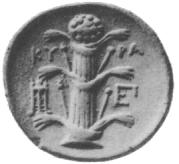21 Surprising Facts About Abortion That Every Pro-Life Or Pro-Choice Person Should Know
The death rate of women seeking abortions from backstreet doctors in New York used to be 30%.
By ![]() Daniel Hayes
Daniel Hayes

1. The first recorded instance of induced abortion (on purpose and not a miscarriage) dates from 1550 BC and was recorded on what is today known as the Egyptian Ebers Papyrus. [Source]
2. Abortion has been treated differently in many different cultures. For instance, in ancient India it was perfectly acceptable for untouchables (the lowest caste) to have abortions whenever they wanted but for the top three castes it wasn’t allowed at all. Women who had abortions or priests who conducted them could be excommunicated.
This was all because “male seed” was considered important but only among the higher castes. Also, if you were an untouchable, good luck getting a priest to touch you in order to conduct the abortion. [Source]
3. Abortion was no more accepted nor rejected in the past than it is today for the most part. Many were against it and many weren’t. It’s basically impossible to appeal to the past in today’s abortion debate because of the variety of opinions and beliefs.
4. One common thread in the way abortion was viewed was that a husband’s rights were considered to be more important. In ancient Greece and Assyria, a woman could be punished for having an abortion performed without her husband’s knowledge. In Assyria around 1075 an abortion in this context could be punished by death. [Source]
5. At the same time, the same tension that some pro-life individuals point to today regarding what constitutes life was present even then. While a woman could have an abortion in ancient Assyria with her husband’s knowledge it was considered a crime to assault a woman in such a way that it caused her to miscarry. [Source]
6. The point at which an embryo was considered to be “alive” in ancient Greece is roughly the same time period which many today consider an embryo to become a live human, at least for females. Aristotle himself pegged this transition period at 40 days after conception for males saying “the line between lawful and unlawful abortion will be marked by the fact of having sensation and being alive.” Females, however, take a full 90 days to get a soul according to Aristotle. Regardless, it was the ability to feel pain that appears to be the intended distinction. [Source]
7. Abortion in ancient Greece was remarkably common, however.

The herb Silphium was used not only as an abortifacient but as a contraceptive as well. To give you an idea of how widely used the herb was used, a picture of the plant actually appeared on money of the city of Cyrene, a Greek city in Libya. Of course, the herb was used commonly for other things as well but it’s use in abortion was in no way a secret or considered a taboo subject.
In fact, the demand for the plant may have been what caused it to go extinct. [Source]
8. During periods of hardship and famine, abortion rates have historically always gone up because it represents another mouth to feed. However, today that general rules doesn’t hold true. During the U.S. economic recession beginning in 2008, abortions actually went down because of the availability of birth control. [Source]
9. There were lots of different methods for performing an abortion before modern science took hold. Some of them, like kicking yourself in your own butt or jumping up and down, don’t work at all. Most methods included using herbs like the above Silphium or like Pennroyal Tea which was used in medieval times. Manual massage was also used in Southeast Asia and New Zealanders used herbal drugs in combination with the binding of a woman’s stomach which sounds unbelievably awful. Surgery was rarely used.
By the way, don’t ever drink Pennroyal Tea in an attempt to perform an abortion. The chances are high that you have no idea what you’re doing and it will kill you. [Source 1, 2]
10. Even today, many Japanese Buddhists practice a ritual known as mizuko kuyo whenever a woman is unable to conceive, miscarries, or has an abortion. Mizuko kuyo is a memorial rite and, in the case of abortion, is intended to honor the aborted. [Source]
11. Like many in America today, the Romans didn’t believe abortion should be illegal but society still looked down on it from a moral standpoint. [Source]
12. The Catholic Church of the 7th century considered abortion to be less worthy of punishment than oral sex. [Source]
13. The modern Catholic Church believes abortion to be akin to murder but they didn’t always feel this way. In fact, the Catholic Church has only believed this for about 300 years. Previous to the 17th century, the Catholic Church had seen early abortion as a relatively minor offense for 1,100 years. People who claim the church has always been against abortion are wrong. [Source]
14. The modern belief among many Christians, Catholic and Protestant, that life (and a soul) begins at conception didn’t appear until the 17th century either. [Source]
15. Traditionally, Islam has viewed abortion in much the same way that modern America does. An abortion could be performed as long as it wasn’t after four months because Muslims believed that the fetus became a human life at that point. They also made clear that the life of the mother holds precedence over the life of the baby. While abortion was viewed as unfortunate and sometimes sinful, it wasn’t disallowed before four months.
On the other end of the spectrum, Islam has traditionally considered abortion to okay if the resulting child would be deformed. This includes mental retardation.
Abortion after four months is considered murder or infanticide. [Source 1, 2]
16. Some doctors in 1890 believed abortion was a rampant problem and claimed that 50% of all pregnancies in large cities like Chicago and New York resulted in abortions. More conservative rates claimed that 17 out of every 100 pregnancies resulted in abortion. However, these numbers are likely inflated or possibly made up completely. [Source]
17. The death rate of women seeking abortions from backstreet doctors in 1800s New York was 30%. Nearly one in three women seeking a surgical abortion died. [Source]
18. The abortion rate in Asia is nearly twice that of the United States. [Source 1, 2]
19. Abortion in Japan is believed to be more common than anywhere else in the world and while exact figures are hard to come by it’s generally believed that this is because abortion is legal and oral contraceptives are not which seems like a kind of bizarre and backwards arrangement in a highly advanced nation. [Source]
20. Abortion in early colonial America was fairly common however premarital sex was completely illegal. As a result, abortions were generally kept secret since pregnancy only happens one way. [Source]
21. England didn’t abandon the death penalty as punishment for abortion until 1837. [Source] ![]()





